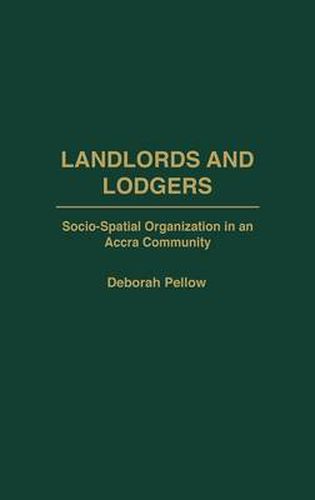Readings Newsletter
Become a Readings Member to make your shopping experience even easier.
Sign in or sign up for free!
You’re not far away from qualifying for FREE standard shipping within Australia
You’ve qualified for FREE standard shipping within Australia
The cart is loading…






An analysis of Accra, Ghana, that focuses on one neighborhood, showing how the social and spatial create everyday reality. Based on 25 years of research on and in Sabon Zongo, one of the oldest migrant communities in Accra, Ghana, this book is about the spatial and social production of this community within this urban setting. While Sabon Zongo is clearly part of the larger urban landscape of Accra, it is also culturally distinct, representing the melding of a migrant Hausa ethos, informed by Islam, its values and its institutions, and the metropolitan knowledge shared by all city dwellers. The author explores the interconnections of community residents to one another both in terms of built space–the boundaries of community, community structures, and compounds–and social space–the social networks, institutions, activities and routines through which Sabon Zongo residents reproduce meaning as constituted by and in their built environment. There is no body of data similar to this study’s both in breadth and depth of understanding relating to this particular urban community. Much of the material has never been published. Both theoretically and substantively, this book makes a unique contribution to the literature on African urban life. Written in a clear, open style, this book will appeal to specialists and interested general readers alike.
$9.00 standard shipping within Australia
FREE standard shipping within Australia for orders over $100.00
Express & International shipping calculated at checkout
An analysis of Accra, Ghana, that focuses on one neighborhood, showing how the social and spatial create everyday reality. Based on 25 years of research on and in Sabon Zongo, one of the oldest migrant communities in Accra, Ghana, this book is about the spatial and social production of this community within this urban setting. While Sabon Zongo is clearly part of the larger urban landscape of Accra, it is also culturally distinct, representing the melding of a migrant Hausa ethos, informed by Islam, its values and its institutions, and the metropolitan knowledge shared by all city dwellers. The author explores the interconnections of community residents to one another both in terms of built space–the boundaries of community, community structures, and compounds–and social space–the social networks, institutions, activities and routines through which Sabon Zongo residents reproduce meaning as constituted by and in their built environment. There is no body of data similar to this study’s both in breadth and depth of understanding relating to this particular urban community. Much of the material has never been published. Both theoretically and substantively, this book makes a unique contribution to the literature on African urban life. Written in a clear, open style, this book will appeal to specialists and interested general readers alike.